Reclaiming the shores of Montreal Island with a new sustainable community pavilion
Parks have been exceptionally busy during these last 2 years, and municipalities have received increasing demand from their citizens to invest in them. For municipalities on the Island of Montreal, new public facilities are reclaiming the shores by offering spaces adapted to the needs of the user communities. Furthermore, new technology has allowed municipalities to integrate sustainable methods into the construction of their buildings in order to fight climate change.


Reclaiming the shoreline of the Island of Montreal through public projects
Completed in the Summer of 2021, the Baie-de-Valois Nautical Centre is a collaborative project between PRISME and ADHOC Architectes. Following consultations with its citizens and shoreline users, the City of Pointe-Claire wanted to revitalize the park, which is used by a community of 4,000 citizens.
Located on the shores of Lake Saint-Louis, in Grande-Anse Park, the project replaces an old and deteriorating park chalet and will serve to enhance water sports activities offered to citizens.

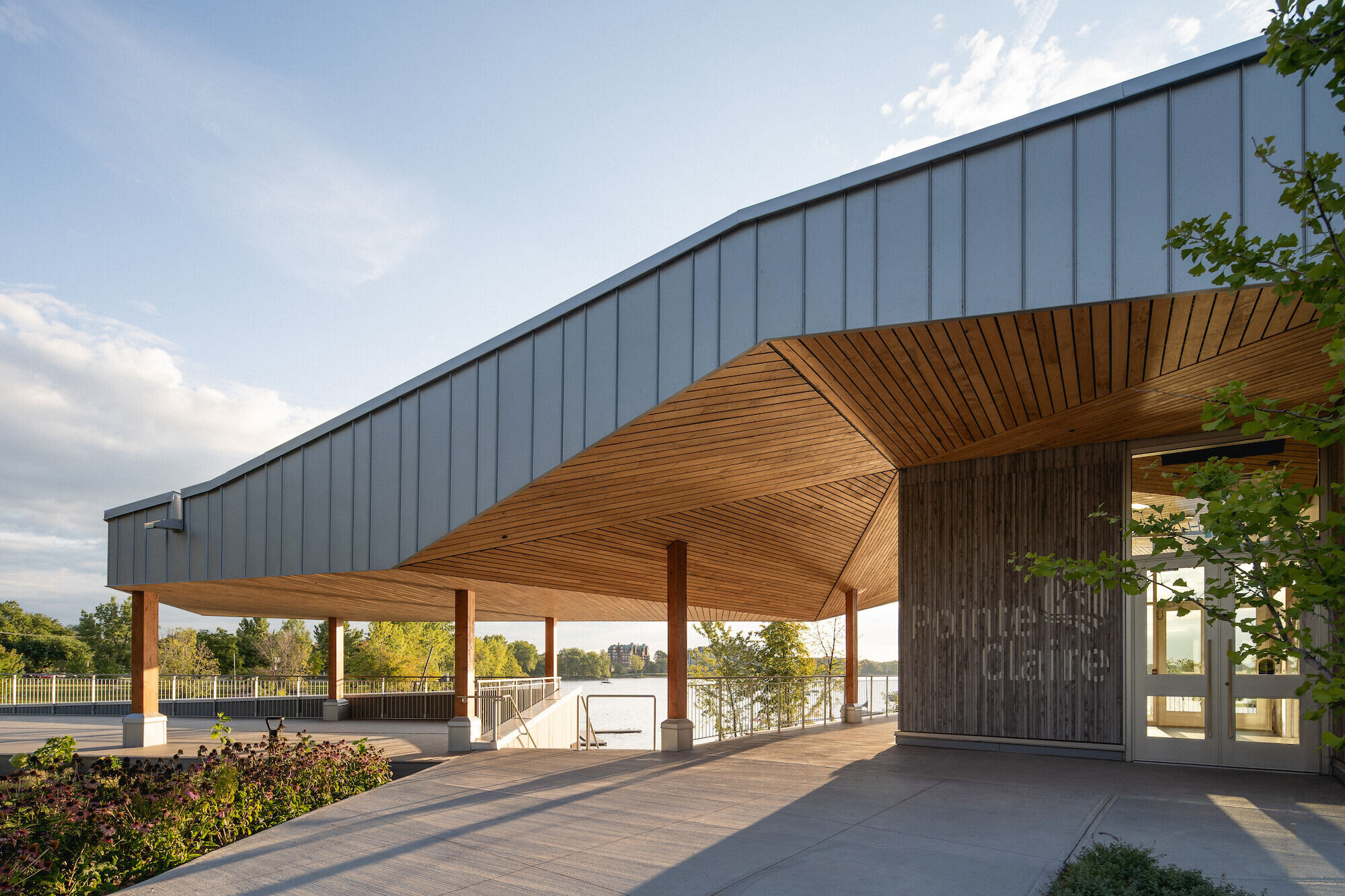
The redevelopment of the site and its building promotes more accessibility to a diverse clientele of all ages. A new community hall, with a capacity of 100 people, allows the location to host events.
Inspired by the geological stratification of the site, the project is broken down into different layers that reflect the surrounding landscape. The angled roof is reminiscent of a tree canopy, and the wood cladding embodies the rhythm of tree trunks in a wooden area. The base of the building represents the geometry of a rocky shoreline. The gesture of the roof translates to the building's interior, creating an immersive atmosphere that poetically reveals breathtaking views of Lake Saint-Louis.


A second patio, set back, allows the landscape to be appreciated in all seasons. Beneath, there is a storage area that opens the view over Lake Saint-Louis, while optimizing the space required for boat storage in winter.
The basement, which provides office and storage space along with changing rooms, is available for boaters and day camp groups, as well as for canoeists, kayakers, and anyone renting a boat.
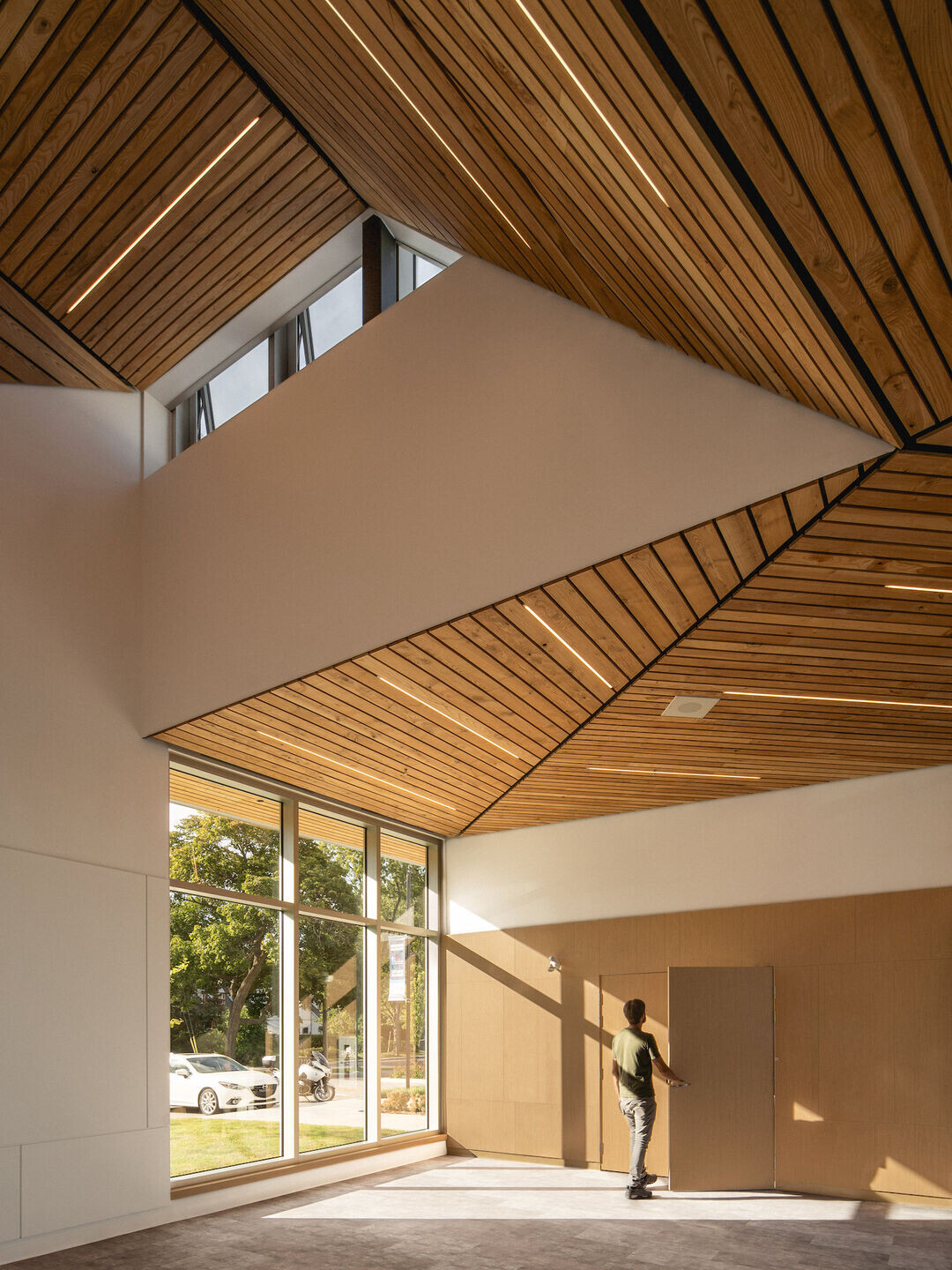
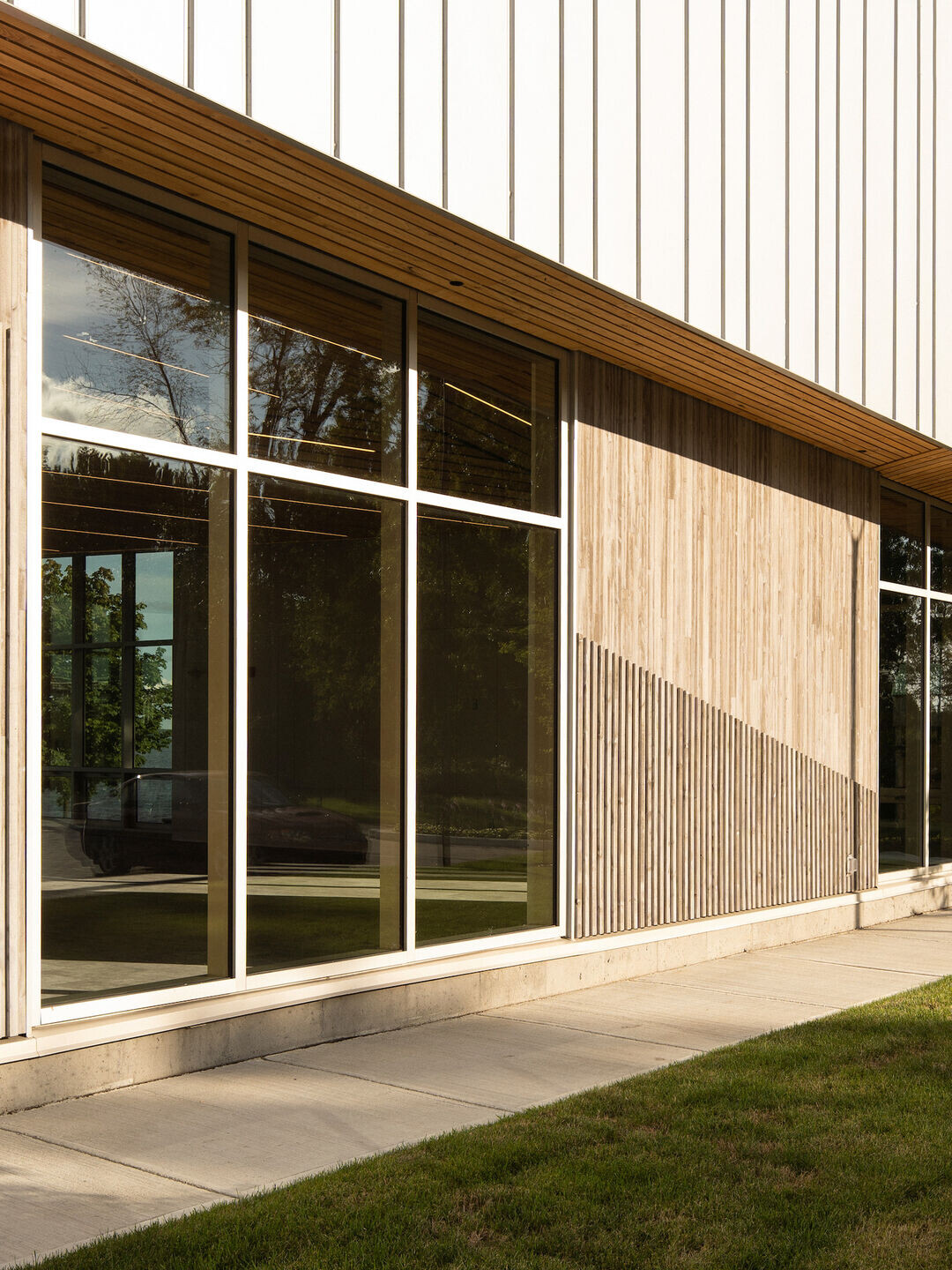
The building, the two patios, the parking area, and the pathway leading to the docks are all universally accessible, designed for everyone to take full advantage of the new facilities.
Several sustainable principles were integrated into the design of the Grande-Anse Park Community Pavilion.
The geometry of the roof, a major aspect of the project’s concept, plays a significant role in reducing energy use. The expression of the roof was conceived to optimize passive solar gains. In the summer, solar rays are blocked by the pronounced overhang of the roof on the southwest side in order to limit heat gain inside the structure. During winter, with the angle of the sun decreased, solar rays can penetrate directly into the spaces and contribute to a passive heat gain.
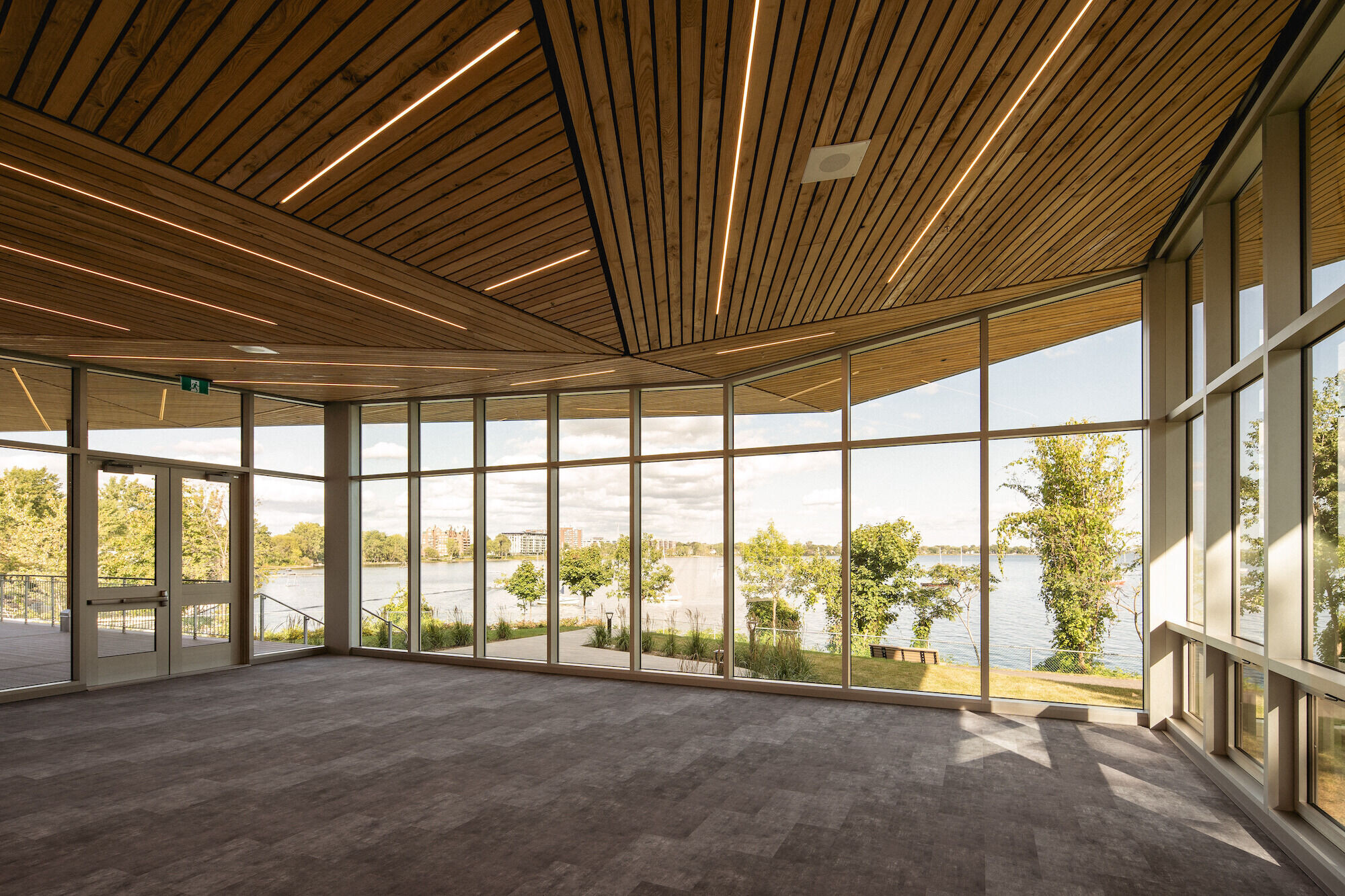
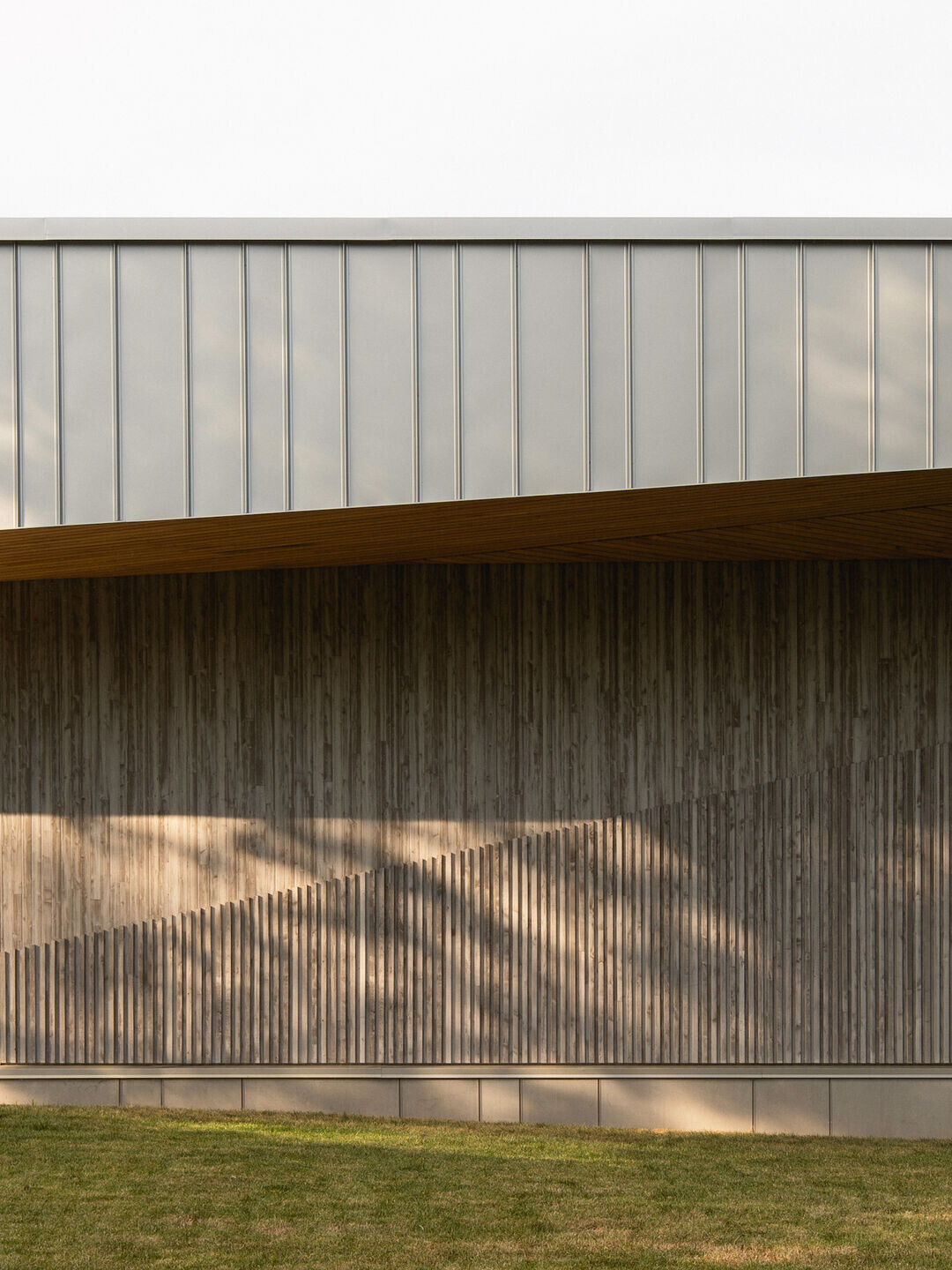
A large skylight allows for natural ventilation of the spaces and provides access to diffused natural light in the community hall. The use of a white roofing membrane on the entire roof reflects light and limits heat gain in the chalet.
A portion of the roof rainwater is strategically redirected onto the site in filtered areas provided by the landscape.
Ash wood, reclaimed as part of the fight against the emerald ash borer, was used for interior finishing work and for the soffits outside. In addition to contributing aesthetically to the project, the reuse of this material contributes to carbon capture and sequestration.

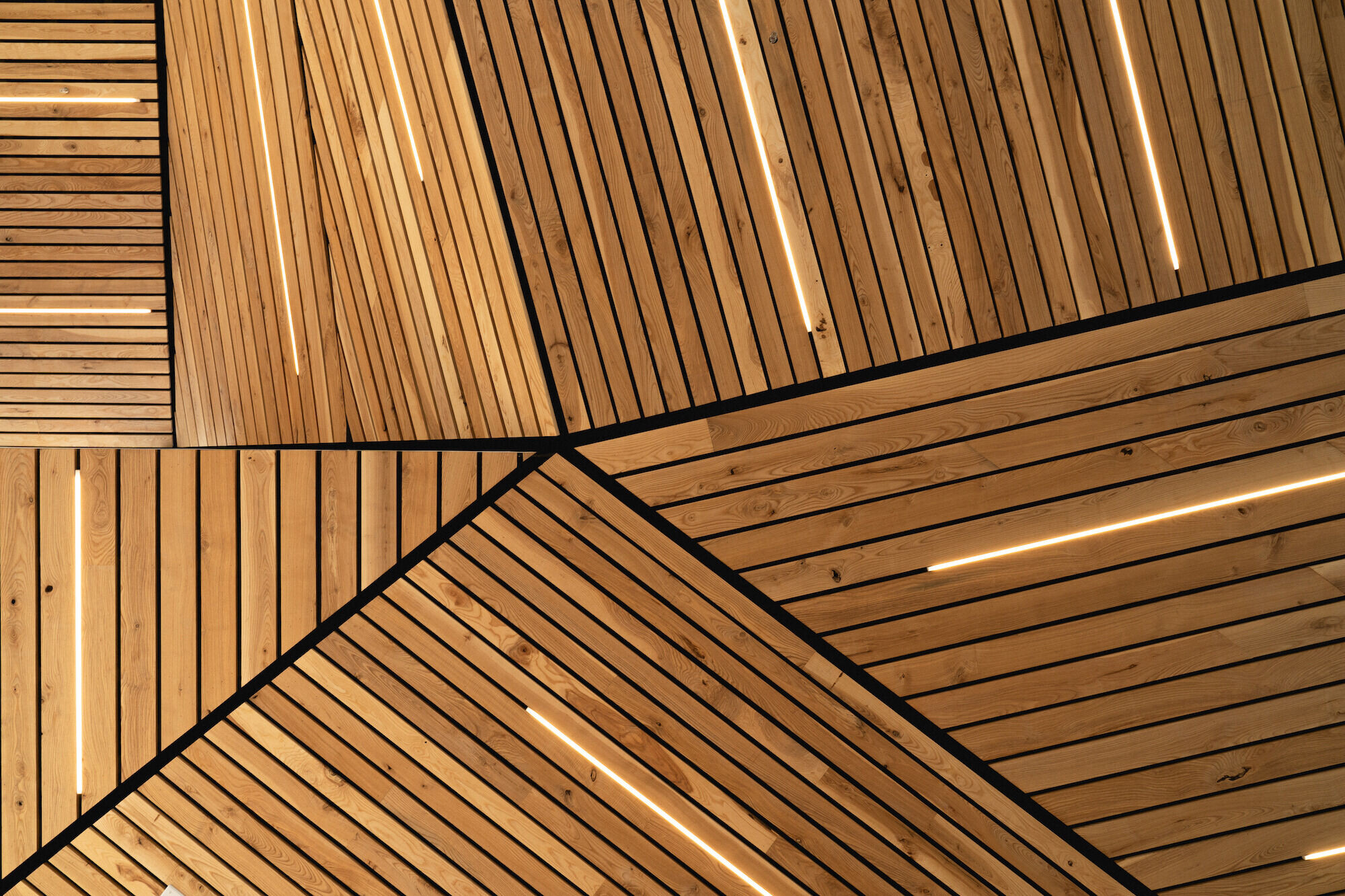
Team:
Architect(s) and/or Designer(s): PRISME and ADHOC Architects
Landscape architect: Dubuc Architectes paysagistes
Structural engineer: DWB Consultants
Electromechanical engineer: DWB Consultants
Civil engineer: Équipe Laurence
General contractor: Groupe Piché
Photo credit: Raphaël Thibodeau




































